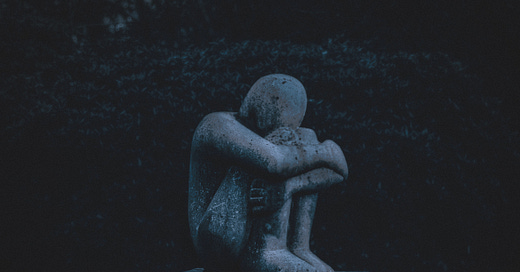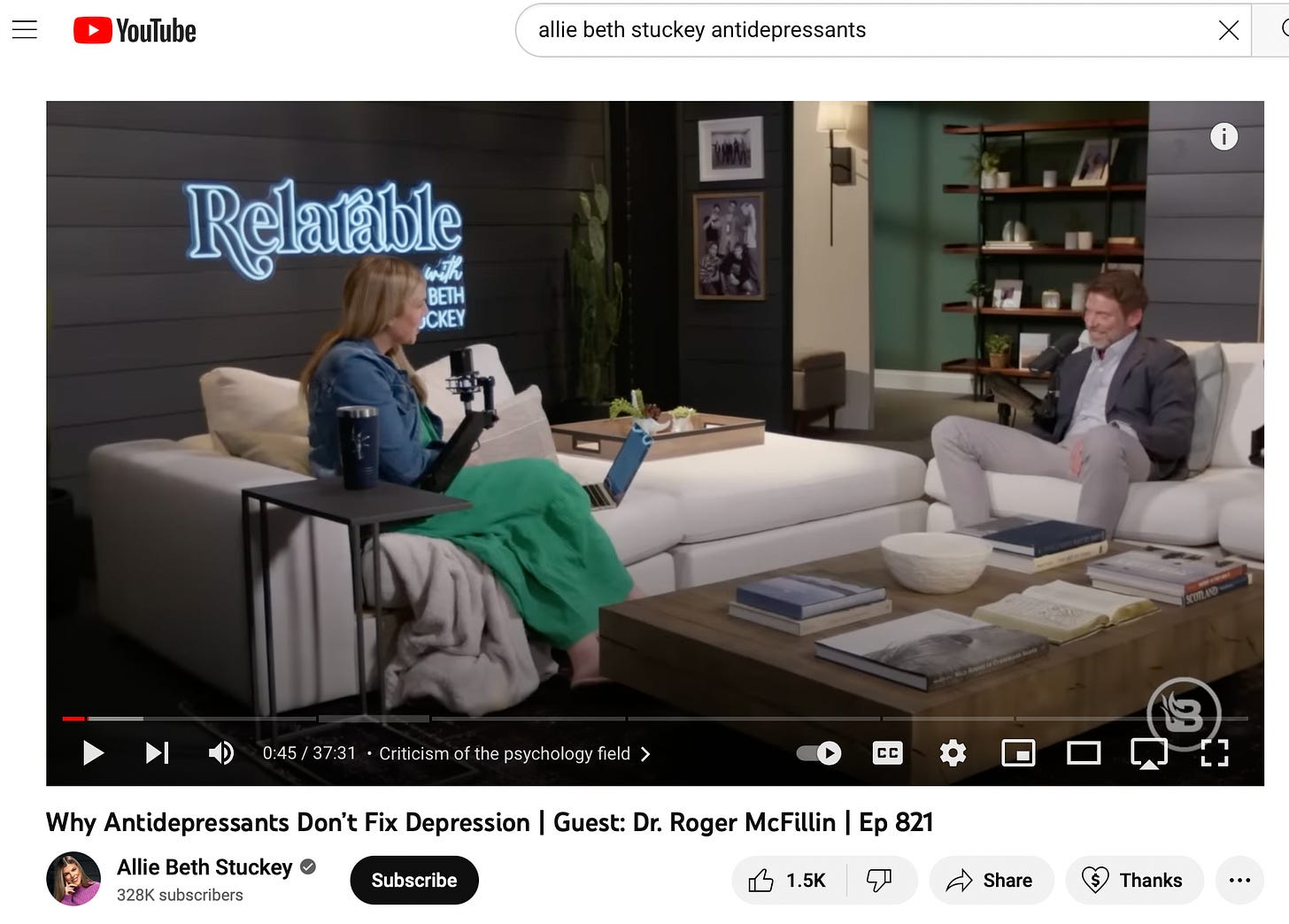A former student of my dad’s back in the 70s or early 80s was a lively, vibrant young girl who, seemingly overnight, became seriously and chronically ill. The cause of this illness seemed a mystery. I believe she was finally diagnosed with chronic fatigue, which is a descriptor of a collection of symptoms without a clear cause. But, instead of getting to the root issue, she became a chronic medical patient.
We moved several hours away so that my dad could attend Bible school, and my parents lost contact with her. Years later, this same individual, now a woman, suddenly arrived back in our lives. She was still very ill, only now she was on a cocktail of heavy duty anti-psychotic drugs for a variety of mental and sleep problems. She was single and living alone, so we began spending time with her as a family—Sunday dinners, pop-in visits, some holidays. One night, the rest of the story emerged. I was sitting with her and my dad eating chocolate chip cookies, just talking about her old life when the memories ventured into dark territory. The timing of her mystery and chronic illness coincided with sexual molestation she experienced over a period of years at the hands of a boy her parents had either fostered or adopted. (I don’t recall whether he was ever legally adopted or not.) At any rate, mental, emotional, and physical trouble ensued. Of course, the causes of chronic fatigue are multi-factorial. But any kind of trauma is often a trigger for such a syndrome, and I don’t believe this particular cause was ever addressed in childhood.
The drugs were unpleasant to be on with nasty side effects and didn’t seem to work all that great. She would disappear into her apartment for weeks at a time and cut off all contact with friends. We worried about her. During those time, she told us, she often did not sleep for days. The insomnia made her crazy. Then she’d crash and sleep, again, for days. She wanted off the drugs in a bad way, but they were very hard to come off of. She eventually found a doctor who was willing to help her titrate off of them, or so he said. I don’t believe his supervision was sufficient, because I got a front row seat to what happened next. The insomnia hit. She moved in with us temporarily as the crazy had begun to set in and she needed help. Her condition deteriorated over the course of two or three days. Then one night, she became hysterical and violent and we were forced to call the police. Off she went in the ambulance to the hospital. Once there, she escaped the hospital and streaked naked down the street before being subdued by personnel. My heart sank. She would, once again, get pumped full of drugs. Nothing would improve. She would end up another file in the medical system, stuck in the revolving doors of doctor visits and tweaked drug dosages to manage side effects, only to continue her lonely dysfunctional life or die before her time.
Watching that situation, though painful, was good for me. I was struggling with intense anxiety at the time, and sometimes the thought of just taking a pill to make the pain stop looked appealing. But that situation, the tragic life of my paranoid schizophrenic uncle languishing in various mental institutions for most of his adult life, and another relative who underwent tender mercies of electroshock “therapy” steeled my resolve. I resolved that I would never take an anti-depressant. I resolved that I would never take an anti-anxiolytic. I resolved that I would never take prescription sleeping pills. And I resolved never to darken the doors of a psychiatric clinic.
What I had seen of the psychiatric system was that patients suffered many things at the hands of doctors and were made no better, but rather worse.
How many of you are on antidepressants, anti-anxiolytics, ADHD meds or stronger stuff? That’s a rhetorical question. I would venture to guess that it’s quite a large percentage. If you are on any of these drugs, please know that I’m not trying to lecture you or make you feel badly about it. After all, I would be on them myself if it weren’t for my contrarian upbringing. What I’m trying to say is that this kind of treatment for the common human condition is ubiquitous and I don’t think it’s a perk of modern life. I think it’s a bug.
At my first job, I had two teenage co-workers. One of them had been on ADHD meds as a little boy. When he was old enough to buck the doctor’s edicts, he refused to take them anymore.
“My stomach hurt all the time,” he told me. “When I got off the meds, my stomach stopped hurting.”
The other one was a sixteen-year-old girl, pretty and sweet with a million dollar smile. She begged her parents to let her stop taking her antidepressants.
“I don’t feel anything. I just feel flat.”
Thankfully, they listened to her.
Both of these kids were drugged against their will, by their parents under the advice of a doctor. Both of them resented it. And I didn’t blame them one little bit.
Legal drugs feature heavily in my new novel, 27. All three of my young main characters are on a regimen of forced psych drugs at one time or another during the course of the story. The main difference between our society and the one in my book is actually quite small. There’s been merely an alteration in the balance of power—just one small ounce of power given to the society over the individual than is currently the case. If someone transgresses in thought, he must be mentally ill, and is carted off, not to prison, but to a mental institution. (At first, anyway.) Once proper thoughts are restored, he is released. If any mental imbalance is found in a person, that person must be on medication, no exceptions. If someone is getting a bit unruly, he is sedated. Everyone lives life sedated, much like us. The only difference is that we do it to ourselves, voluntarily. (For now.) In my book, it will be done, voluntarily or involuntarily. Take your pick, but it will happen. And everyone is much happier, and society is much more orderly and calm…until it’s not.
Because numbing the pain and sedating people through life has side effects. Eventually, people always get tired of the side effects and chaos bursts forth again. But the most important thing to me is in that word, “sedation.” So many of these drugs sedate, numb, flatten. And when you’re numbed, flattened and sedated can you feel joy and love, see beauty, cry tears that relieve? I will let one of the characters from my novel speak to you for a moment.
“I keep bringing up bad, old memories, don’t I?” Shane said, shaking his head. “I’m sorry.”
“Life is such a strange mix of pain and beauty, isn’t it?” Jessica asked, more to herself than Shane. “The pain and the beauty in stark contrast…that’s what life was like in the woods. If I had to sum it up, that would be the best description.”
“And you’re still intent on going back?”
“Yes.”
Jessica sat all the way up and stared out across the river.
“Because…” she said, “here, folks have become so good at dulling the pain, all the pain a person can feel, that they can’t see the beauty either. And that’s no way to live.”
Some of the most beautiful symphonies, the most eloquent poems, the most inspiring novels, the most effective sermons were born from deep, dark periods of depression by people who saw the brightest points of light in the darkness and soul crushing beauty against their despair. I wonder. Would we have even half of Spurgeon’s sermons if he had not suffered depression or had lived now and been prescribed pills?
What am I saying? That we should take no steps to relieve our pain? No. But perhaps if the default method of treatment for our mental pain were not pills, perhaps we would look deeper for its cause. Our emotions are powerful indicators of inward problems. Maybe we shouldn’t just turn them off with pills. Perhaps we would discover our undisciplined mental habits and correct them. Perhaps we would find that a chronic and undiagnosed bacterial infection was affecting mental stability and deal with that. (Yes, this is a real thing. My doctor works for a clinic that helps people get off psych meds by dealing with underlying infections like Lyme or toxoplasmosis.) Perhaps we would find that our diet was making our minds sick and correct that. Perhaps we would finally deal with the pent up memories of abuse, process that, heal and let it go. Perhaps we would finally make amends for that thing we did years ago that has been tormenting us instead of shoving it down every time it comes up. And then, what if…all that mental pain just…went away without pills? Wouldn’t that be better?
And if this were the default instead of the last resort, maybe in the future, those who like to amass power to themselves at our expense will have one less club to wield over our heads. You will become ungovernable in the best sense—unable to be coerced into supporting evil of any kind—reveling in truth and beauty.
I have been thinking about this topic of mental health for years, but what brought it to the forefront once more this last week was a two-part podcast I listened to while working around the house. Maybe you’ve heard of Allie Beth Stuckey and her Relatable podcast? Anyway, she interviewed a psychologist by the name of Dr. Roger McFillin who has worked extensively with troubled youth. It was eye-opening and informative. Even I did not realize the full extent of our current situation with psych meds and kids. So many children and teenagers are on these drugs, many of which, haven’t been safety tested for use longer than several weeks, and we know most of these drugs are taken for periods of years. The side effects, especially, are alarming. Suicidal ideation, hallucinations, sexual dysfunction and more. I would encourage you to watch this interview, both parts, and learn all you can from it. Especially if you have kids.
You can also read direct from Dr. McFillin right here on Substack!
Housekeeping
Keep sharing! I’d really love to grow my subscription base here on Substack, but it’s a challenge as more people are familiar with Facebook and similar social media sites, and therefore, unfamiliarity equals reticence to join. I am fully committed to making Substack my home base for many reasons. Facebook is too addictive and it is created that way on purpose. With Substack, there’s no doom scrolling because there’s no feed. Therefore, me and my subscribers are wasting a lot less time online and filling our lives with better and more useful activities and that is an excellent thing. Also, I get to communicate directly with you and know that you’ll receive what I write rather than hoping the Facebook algorithm will favor me by allowing my followers to read what I write. None of that nonsense here! So, below is a handy share button. Give a girl a hand and share this post around.
The next chapter of The Pursuit of Elizabeth Millhouse will go out to paid subscribers as usual, Wednesday morning. Please consider supporting me as a writer by upgrading to a paid subscription and following along in the story.
That’s all for now. Until next time, folks…







Hi Amanda!! I wanted to let you know that I'm really excited to share that I've subscribed to a platform that provides insightful and informative content. Thank you ☺️